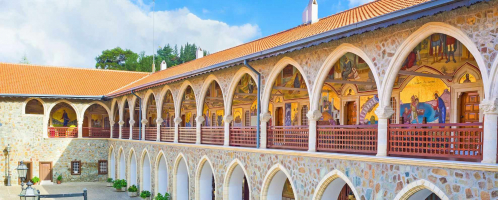Top 10 Lithuanian Culture, Customs, and Etiquette
Lithuanian culture mixes an indigenous legacy, symbolized by the distinctive Lithuanian language, with Nordic cultural elements and Christian traditions as a ... read more...result of historical relations with Poland. Lithuania was affected by Nordic, Germanic, and Slavic cultures at different points in its history, despite linguistic similarities suggesting close cultural ties with Latvia. During Lithuania's transition from a Soviet-occupied country to an independent Baltic state, a number of cultural developments took place. Here are some things to know about Lithuanian Culture, Customs, and Etiquette.
-
Sutartines dances are some of the earliest traditional dances in Lithuania. The polyphony of the text and music, as well as the repetition of onomatopoeic words, define them. Simple dance moves like walking, stamping feet, gliding, switching places, coming, and turning are used to accompany the sutartine (song).
Rateliai, a sort of circular dance, is a different genre of Lithuanian folk music. Fiddles, lumzdelis, a type of whistle similar to the clarinet called the birbyne, and kankls, a type of zither that accompanies sutartines, rateliai, waltzes, quadrilles, and polkas are among the instruments used. More recent imports, starting in the late 19th century, include the concertina, accordion, and bandoneon. Sutartin is accompanied by wooden trumpets (ragai and dandyts) and the skuduiai, a type of panpipe performed by a group of people. The kankls is a very significant folk instrument, with variations in string count and performance style across the nation. Other traditional instruments include the sekmini ragelis (bagpipe), the vilpas (whistle), drums, and tabalas (a percussion instrument similar to a gong).
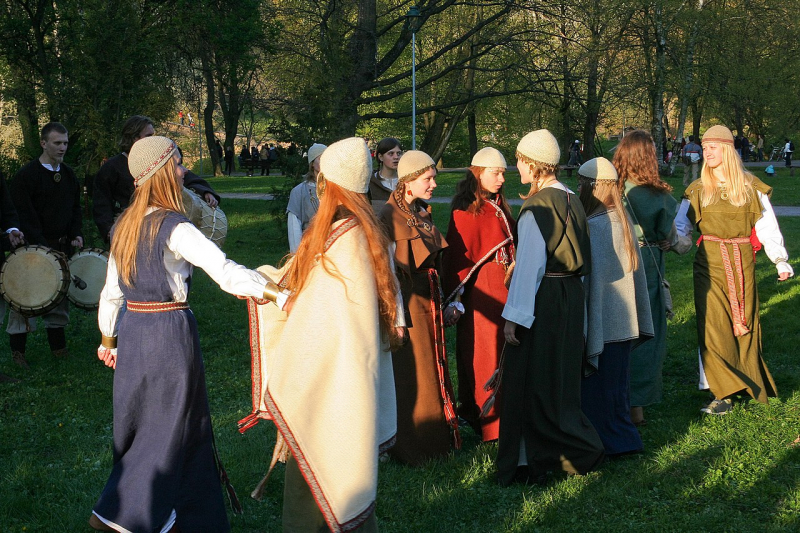
wikipedia.org 
delfi.lt -
Another Lithuanian culture, customs, and etiquette that you must bear in mind is Lithuanian literature. Lithuanian literature is a product of a nation that has seen a lot and gone through a lot. Its natural development in line with Western cultural trends has frequently been halted by oppression from abroad. It underwent a variety of dramatic changes, historical transitions, volatility, and ideological strain throughout the 20th century. Around 1989, after being occupied for nearly 50 years, Lithuania began to breathe freely after the fall of the Berlin Wall and the Soviet Union, as well as when the Baltic states joined forces to form the Baltic Way.
The Republic of Lithuania reclaimed its independence on March 11th, 1990, and took its rightful place on the international map. Since then, independent and freely created Lithuanian literature has also been able to resume its natural course. In Lithuanian Culture, freed from the previous constraints of ideological censorship, it has embraced a number of creative tendencies and begun gaining new inspiration to flourish. Therefore, the best place to start the narrative of current Lithuanian writing is in the year 1989.

delfi.lt 
literature.britishcouncil.org -
The Lithuanian language is one of the many spoken in the Baltic states, but it stands out as the oldest Indo-European language still in use today with Sanskrit-inspired characteristics. As a result, it is a crucial component of Lithuanian culture. Early migrants carried their language with them as they moved between continents. These languages frequently underwent radical changes from their initial forms. But because of its gradual development, Lithuania has a unique position as a vital link to those prehistoric peoples. It illustrates how language culture has survived despite the test of time and difficulties brought on by occupation.
Unfortunately, learning is challenging for outsiders. It has only a few grammatical structures in common, if any, with the languages of the considerably broader Slavic language family. Even the most attentive learner could be misled by the diacritical marks and diphthongs, despite the Latin alphabet's use. On the other hand, online and in-person courses both provide instruction from native speakers who can help you on your trip into this ancient tongue if you're interested in dipping your toe into the Lithuanian language.

languagephrases.com 
gurmentor.com -
Religion is also one of the Lithuanian culture, customs, and etiquette that you should know before traveling to Lithuania. Along with the ancient religions of Northern and Central Europe (Slavs, Germans, and Celts), the Lithuanian religion represents the realities of Indo-European faiths. It is a member of the Baltic religions and through several connections is tied to Prussian and Lettish religions. Its distinguishing characteristic is a certain social dimension, i.e., neither the Prussians nor the Letts had yet established a sovereign state, with either knighthood or warriors having developed into strong social strata; in contrast, the sources from the 13th and 14th centuries would typically refer to Lithuanian religion in terms of the forms of religion that the warriors and lords would have practiced.
Most Lithuanians have been Roman Catholics since Samogitia and parts of Lithuania proper were Christianized in 1387 and 1413, respectively. 79% of Lithuanians, according to the 2001 census, are Roman Catholics. Eastern Orthodox people make up about 4.9% of the population, primarily Russian immigrants. Individuals in Lithuania are free to follow any religion they choose, as stated in Article 26 of the Constitution. Under the Soviet Union, Catholicism had a significant impact on Lithuanian anti-communist resistance. Even though the Hill of Crosses near iauliai was bulldozed in 1961, hundreds of Latin rite crosses were erected there. A number of Catholic priests served as leaders of the anti-communist demonstrations.

lithuania.travel 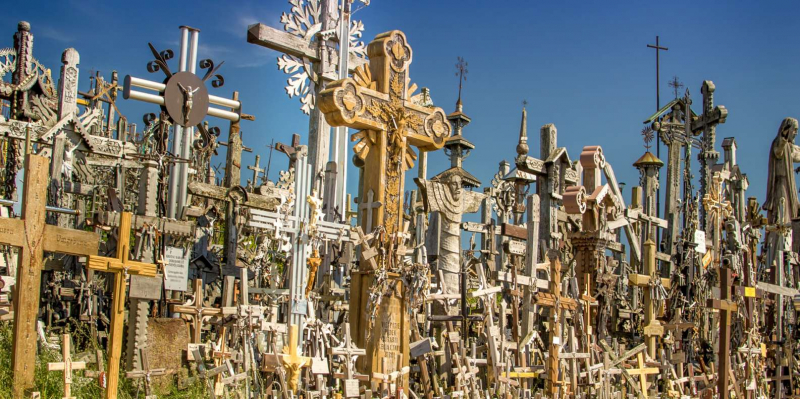
getyourguide.com -
The term "music of Lithuania" refers to all musical genres connected to the country, which has a lengthy history of folk, popular, and classical musical growth. Pre-Christian Lithuania was a polytheistic nation, and music played a significant role in rituals. Songs were written to commemorate the brave acts of soldiers and those who perished in battle, as well as to accompany musical accompaniment.
The polytheistic beliefs of ancient Lithuanians placed a high value on music. It is known that around the beginning of the second millennium, Baltic tribes had unique burial customs in which the actions of the deceased were recounted through recitation. Ritual songs about battles, heroes, and kings were also present. Traveling monks brought the first professional music to Lithuania in the eleventh century. Gregorian chant was first introduced after Lithuania was christened in 1387 when religious music first began to spread. Local cappellas were established as a result of concerts that traveling artists organized at the manors and castles of the Lithuanian nobility.

womex.com 
womex.com -
Mikalojus Konstantinas iurlionis is renowned throughout Lithuania's artistic community (1875–1911). In Lithuania, iurlionis was a well-known musician and artist. His orchestral works Jra ("The sea") and Mike ("In the forest") were the first in their entirety to be created by a Lithuanian composer. Jra ("The sea") and Mike ("In the forest") were written to symbolize the landscape of Lithuania. The 2420 Iurlionis asteroid, which was discovered in 1975 in memory of Iurlionis, bears his name.
There are numerous museums in Lithuania. The main museum for the preservation and exhibition of art in Lithuania was established in 1933 and is known as the Lithuanian Art Museum. The Lithuanian Art Museum has a subsidiary called the Palanga Amber Museum. A sizable portion of the museum is made up of various amber objects. About 15,000 of the 28,000 amber pieces on display have inclusions of insects, spiders, or plants. The museum has 4,500 amber pieces that are utilized for jewelry and artwork.

streetartbln.com 
wikipedia.org -
There are several well-known architects with ties to Lithuania who have made contributions to the field. During the seventeenth to nineteenth centuries, Johann Christoph Glaubitz, Marcin Knackfus, Laurynas Guceviius, and Karol Podczaszyski played a crucial role in introducing the Baroque and Neoclassical architectural movements to Lithuanian architecture. Additionally, Lithuania is famous for its many castles. There are about twenty castles in Lithuania. Some castles have to be rebuilt or survive partially. Village life has existed in Lithuania since the reign of Vytautas the Great. There are numerous ethnic settlements in Lithuania, including Zervynos and Kapiniks.
Vilnius, Kaunas, Klaipda, Alytus, Panevys, and iauliai are home to 40% of Lithuania's population. Despite an increase in population density, Lithuania's population has decreased overall as a result of high mortality rates and low birth rates. Due to Lithuania's chilly climate, the World Bank provided funding for the Lithuania Energy Efficiency Housing Project between 1996 and 2001. This project upgraded the thermal temperatures in some of Lithuania's homes.
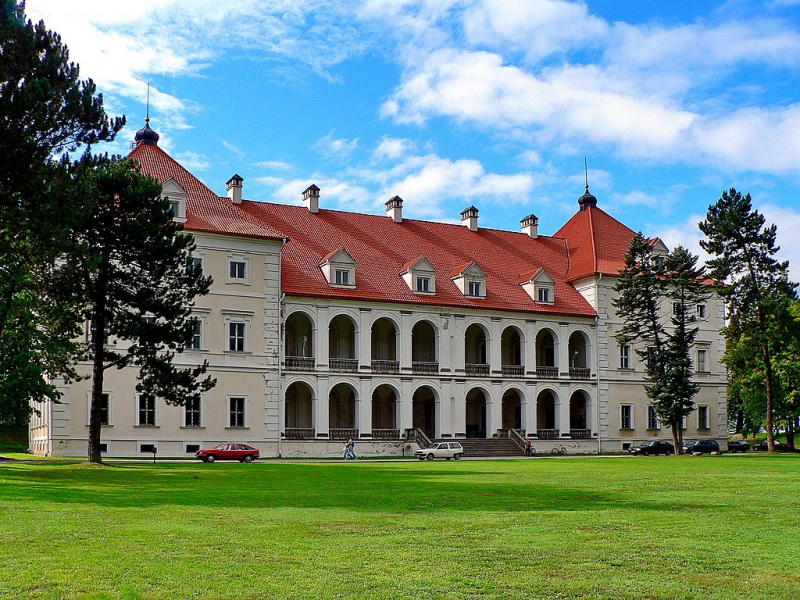
wikipedia.org 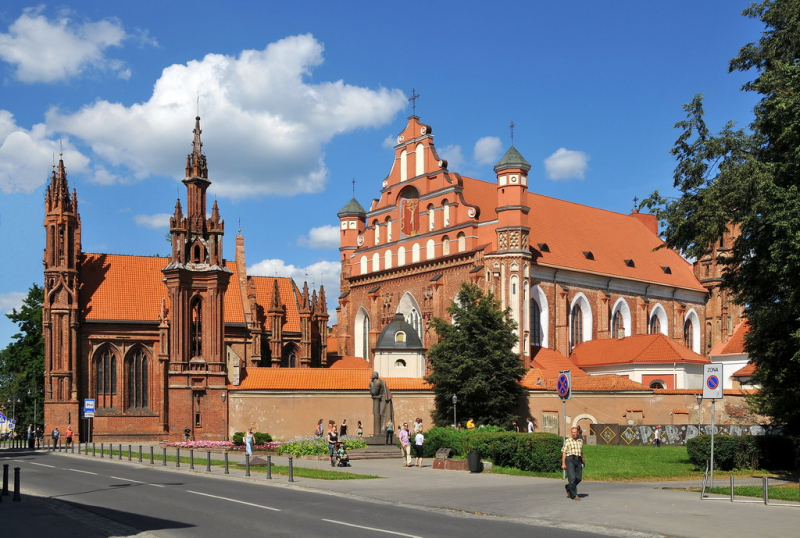
wikipedia.org -
Lithuania, like the other Baltic states that are close by, enjoys a lot of holiday celebrations. But the main factor here is undoubted that it belonged to the Soviet Bloc before 1991. Holidays in Lithuania are quite new, having just been instituted in the past 20 years or so, shortly after the country gained its independence from Russia. The July Sea Festival, which features cuisine, music, and several acts, is three days long of fun and excitement. Visit Lithuania in May for a singular experience to learn more about the significance of Street Music Day.
Among the most well-known film events in Europe is the Vilnius International Film Festival. It is the oldest festival in Lithuania and among the Lithuanian culture, customs, and etiquette. This magnificent event, which takes place every March, brings together ardent movie fans, critics, producers, and stars from all over the world. It started in 1995 but quickly gained popularity, drawing more than 50,000 visitors annually. Other cities in Lithuania host the festival as well.

lithuaniatribune.com 
linkedin.com -
Following its separation from the Soviet Union in 1990, Lithuania's Physical Education and Sports Department is in charge of overseeing sports. The agency was founded by the Lithuanian government to oversee the nation's sports administration and physical education in the classrooms. Lithuanian sports groups established (or re-established) membership in global governing bodies throughout the following few years (including the International Olympic Committee). Since taking part in the Albertville Winter Olympics, Lithuania has done the same for every Summer and Winter Games.
In order to bring together the almost 80 Olympic and non-Olympic sports federations in Lithuania, the Lithuanian Union of Sports Federations was established in 1993. To encourage physical education and a healthy lifestyle for all Lithuanians, "Sports for All" was formed as an organization. Basketball, football, athletics, and cycling are some of the most popular sports in Lithuania. At the Lithuanian Academy of Physical Education, coaches and professional athletes receive their education.

euobserver.com 
theculturetrip.com -
The traditional clothing of Lithuania is distinguished by the use of natural textiles, embroidery, and weaving. They are unique as well thanks to the multiple layers of cloth, striking color combinations, and regional designs. Despite certain parallels in their traditional style, Lithuanians donned apparel that was unique to their country.
The woven sash, which is a feature of a Lithuanian dress, is made of vividly colored yarns weaved into different patterns. It completed the costume when it was tied around the waist. The other components of Lithuanian apparel, however, also benefited from weaving, and the selection of colors or patterns made them indicative of the local culture.
Men's traditional wear tends to be less colorful than women's national clothing. Due to Lithuania's cold temperature, multiple layers were worn, including boots, a shirt, a vest, skirts or pants for ladies, and vests or coats for males. The traditional clothing of Lithuania is made of natural materials like wool and linen.

inyourpocket.com 
pinterest.com



























